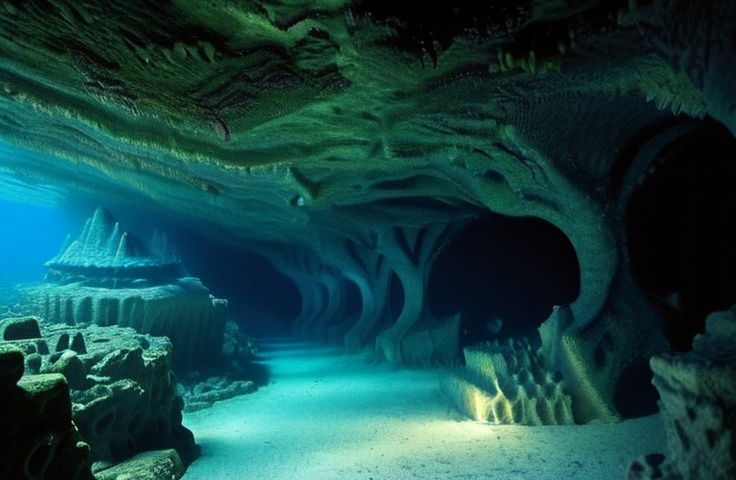Researchers exploring ancient underwater caves off the coast of Sicily have found numerous tantalizing clues about the expansion of early humans into the Mediterranean. While most of the 25 submerged caves and ancient rock structures were first discovered between 1870 and the 1990s, this is the first effort to decipher the clues in these caves to trace the expansion of humans in the distant past.
“Previous scholars assumed that sites on the southern coast of Sicily would be eroded or too damaged to yield useful information,” explained T.R. Kidder, the Edward S. and Tedi Macias Professor of Anthropology in Arts & Sciences at Washington University in St. Louis (WashU) and a co-author of the new study. “But finding underwater sites opens up a whole new terrain to study. It allows us to reconsider routes of migration of these earliest modern human ancestors.”
“This research shows that new ways of thinking and looking can reveal patterns that weren’t visible before,” Kidder added.
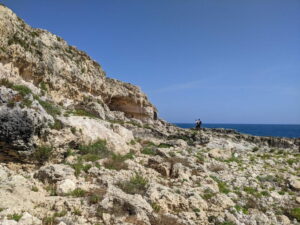

The Role of Ancient Underwater Caves in Human Migration
Sicily is believed to be the earliest island in the Mediterranean to have been occupied by ancient humans. However, scientists are not sure how the earliest European migrants accomplished this feat. Sicily lies only 2 miles from the Italian coast at its shortest point.
Although this distance is negligible in the 21st century, the researchers say that the first humans exploring the region thousands of years ago would have found it incredibly difficult to traverse. In fact, the researchers say that every year, thousands of modern-day African migrants attempting to make the crossing in rudimentary rafts often fail to reach Sicily before their vessels capsize.
Modern-day scientists are also not quite sure when the event happened. Most researchers suggest the first ancient humans to occupy Sicily arrived about 16,000 years after the Last Glacial Maximum. Unfortunately, the LGM occurred sometime between 24,000 and 18,000 years ago, leaving a wide range of possible dates for the arrival of the island’s first migrants. The researchers also note this date would be “puzzlingly late” since ancient humans are known to have traveled by land into Siberia “about 30,000 years earlier.”
Further complicating the issue, scientists aren’t even sure of the exact method these ancient humans used to reach Sicily. The most popular theories include travel by sea on rudimentary craft or by foot across an ancient land bridge.
“A challenge for understanding the spread of early modern human ancestors is that we don’t fully understand how they spread and colonized the world at a very early stage,” Kidder said. “Did folks come down from Italy and cross the Straits of Messina, or did they come from the south along the African coast? Or, is it possible that they were island hopping across the Mediterranean?”
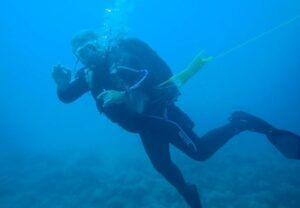

The research team says they were not simply looking for clues about individual ancient humans crossing the Mediterranean to reach Sicily. Instead, they were hoping to find evidence of the first entire group of humans settling on the island to make it their permanent home.
“What we are looking for is not just the first person who arrived, but the first community,” said Ilaria Patania, an assistant professor of archaeology in Arts & Sciences. “Understanding the timing of the initial colonization of Sicily provides key data for the pattern and mode of the early expansion of Homo sapiens into the Mediterranean.”
Unfortunately, Patania said very little previous research existed to guide the team’s effort. She also noted that very few of these local Upper Paleolithic sites have been excavated and analyzed “using scientific methods.”
Underwater Cave Exploration Reveals Clues
To prepare for the field excursions, Patania and her team first explored the archives of local Sicilian town libraries. This exhaustive effort included poring through historical bulletins and news articles dating back to the 1800s.
Next, the team reviewed photographs and other records of materials collected by “avocational” archaeologists living in the area. They also tracked down anyone they could find who had worked on any of these previous excavations and interviewed them about their findings. These interviews were extended to local fishermen and divers who might have encountered ancient underwater caves during their work.
For example, one of the study’s co-authors is a retired local tugboat captain. Although he had no formal scientific training, the captain spent most of his life working on boats traversing this area. According to Patania, local resources like the captain proved invaluable in locating new sites or relocating previously discovered ones.
“The moment I said that I was looking for paleosols and that paleosols look like clay dirt that could be red or gray underwater, he said, ‘I know exactly what you are looking for,’” she recalled.
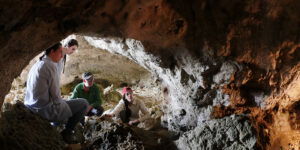

Armed with their research findings and witness accounts, the study authors conducted surveys in the areas highlighted by their interview subjects and research materials. This effort, which focused on land and underwater sites along the Sicilian coast, revealed three previously undiscovered ancient underwater caves. According to the researchers, these newly discovered sites may contain “potentially important archaeological sediments.”
During their expeditions, the team also relocated a number of sites that had previously been discovered but had since been lost. More precise mapping of these locations not only adds to the knowledge of the area but may also point researchers to the location of previously undiscovered ancient underwater caves.
“Our project is still in its early stages, but already we have identified and assessed over 40 sites of interest, of which about 17 are sites that have been relocated with greater precision based on older identifications,” Patania explained.
One particularly compelling find came from Corruggi, an archaeological site on the southernmost tip of Sicily. Previously discovered in the 1940s, the Paleolithic site offered Patania and her team new clues about the possible route used by the first ancient humans to occupy the Mediterranean island.
“When we inspected this site, we found teeth from a European wild ass and stone tools,” she said.
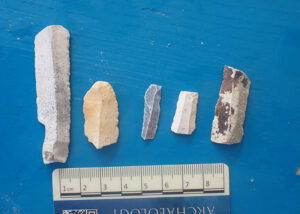

The new findings, taken in context with the ancient underwater caves found along the island’s coast, could be the missing link the team has been searching for.
“This site is where a second land bridge would have connected this island with the island of Malta,” Patania said. “Analyzing the remains from this site might give us insight on the very last leg of the human journey south into the southernmost coast of Sicily and off toward Malta.”
Sea-Level Changes, Earthquakes, and Volcanoes
In the study’s conclusion, the authors note that their work has just begun. Moving forward, they plan to expand their search for even more ancient underwater caves or other submerged Paleolithic sites.
“We’ve started with the area close to the coast, and we’re slowly going to move further out in the years to come,” Patania said.
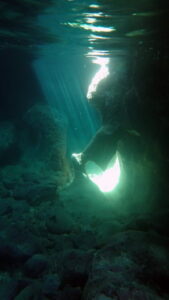

During these future expeditions, the team says they will expand their study beyond the location and timing of the area’s first ancient human settlers by trying to understand how they lived and interacted with their local environment.
“We hope to reconstruct not only the timing of human occupation but also the environment these people lived in and how they negotiated with natural events like earthquakes, climatic and environmental changes, and maybe even volcanic eruptions,” Patania explained.
The study “Between land and sea: A multidisciplinary approach to understand the Early Occupation of Sicily (EOS)” was published in PLoS ONE.
Christopher Plain is a Science Fiction and Fantasy novelist and Head Science Writer at The Debrief. Follow and connect with him on X, learn about his books at plainfiction.com, or email him directly at christopher@thedebrief.org.
